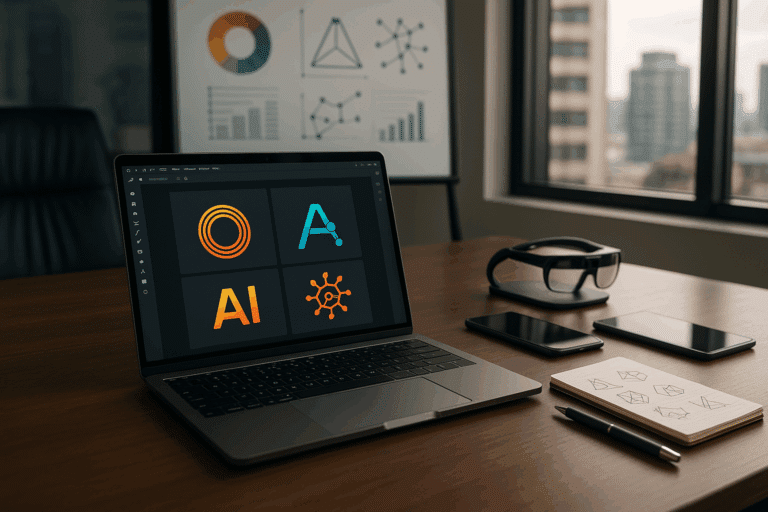It’s a well-known fact that a captivating product photo can grab the attention of your potential customers and give them a compelling reason to click that ‘Add to Cart’ button. But, high-quality product photography usually comes with a steep price tag, right? Not necessarily. 🤔
Enter Artificial Intelligence (AI). The meteoric rise of AI is transforming the landscape of product photography in ways we never imagined before. The integration of AI into the domain of product photography is revolutionizing the way businesses create visually stunning product images without breaking the bank. 😮
In this comprehensive guide, ‘Picture Perfect: How AI Can Elevate Your Product Photography Without Breaking the Bank’, we will delve into the intersection of AI and product photography, and how this powerful synergy can significantly enhance your product images while keeping costs under control. Get ready for a deep dive into the world of AI-powered product photography!
🔍 What’s in Store?
With a solid foundation in Software Engineering, a decade-long experience as a technical writer, and a knack for making complex concepts accessible, I’ll guide you through the nooks and crannies of leveraging AI for product photography. We’ll start from the basics – introducing the concept of AI and its role in product photography, and then gradually build upon this foundation.
Next, we’ll walk through real-life examples of AI applications in product photography, uncovering how businesses are capitalizing on this technology to create eye-catching product images that sell. We’ll examine the benefits, potential challenges, and the future implications of using AI in product photography.
And finally, we’ll explore some of the best AI tools in the market that can help elevate your product photography game. You will gain actionable insights and practical guidelines on selecting the right AI tool for your specific needs.
⏳ Why Should You Stick Around?
AI is no longer the future; it’s the present. Its implications are far-reaching and pervasive, touching upon diverse fields, including product photography. If you’re a business owner, a product photographer, or anyone interested in leveraging technology to amplify your business success, this guide is for you.
As we venture through this guide, you’ll understand how AI can simplify your product photography process, enhance the quality of your product images, and deliver impressive results without causing a dent in your budget. With real-life examples and practical tips, this guide will empower you to harness the potential of AI for your product photography needs.
So, buckle up and get ready for an exhilarating journey into the realm of AI and product photography. Whether you’re a novice or a seasoned pro, there’s something in store for everyone. Let’s dive in and discover how AI can take your product photography to new heights without burning a hole in your pocket! 🚀
🚀 Embracing AI for Product Photography: The Revolution You Didn’t Know You Needed
The world of product photography is evolving at lightning speed. Traditional methods are being replaced with more efficient and cost-effective solutions. One of the most exciting developments in recent years is the use of Artificial Intelligence (AI). AI is disrupting the field by making it easier for businesses of all sizes to create high-quality images without hiring a professional photographer. For a deeper understanding of this game-changing innovation, check out the video, “AI in Photography: Future of Imaging” by Seeker on YouTube.
AI technology for product photography is not just a trend; it’s a revolution. It’s offering businesses an affordable and effective way to showcase their products in the best light possible. But how does it work, and what makes it so effective? Let’s delve into the details.
AI in product photography can take many forms, but most commonly, it involves software that can edit and enhance photos to a professional standard automatically. The software can adjust lighting, remove backgrounds, and even create 3D models of products. The result? Stunning, high-quality images that were previously only attainable with expensive equipment and experienced photographers.
💡 AI vs Traditional Photography: A Comparative View
When it comes to product photography, both traditional methods and AI have their place. The best choice depends on your specific needs, budget, and resources. Let’s compare the two.
| Method | Cost | Time | Quality | Flexibility |
| Traditional Photography | High | Long | High | Depends on photographer’s skills |
| AI Photography | Low | Short | High | Highly adaptable, can generate multiple versions |
As seen in the table above, AI photography offers several advantages over traditional methods. While the initial quality of both can be high, AI can produce consistent results faster and at a lower cost. Additionally, AI provides more flexibility as it can quickly generate different versions of the same image to suit various needs. Refer to the table above for a clearer comparison.
Of course, like any technology, AI isn’t perfect. It might not fully replace the creativity and experience of a professional photographer. However, for businesses looking to enhance their product imagery on a budget, AI can be an excellent tool.
🔍 Delving Deeper: How AI Elevates Product Photography
AI’s capabilities in product photography are diverse and ever-expanding. From image retouching to creating 3D models, the possibilities are vast. Here are some ways AI is reshaping product photography:
- Background removal: AI can automatically remove backgrounds from product images, making them ready for use on eCommerce sites.
- Lighting adjustments: AI can analyze the lighting in a photo and make necessary adjustments to highlight the product.
- 3D modeling: Some AI software can create a 3D model of a product from 2D images, allowing for interactive product views.
- Consistent styling: AI can apply the same editing style across multiple images, ensuring a consistent look and feel.
These capabilities are just scratching the surface of what AI can do in product photography. As technology advances, we can expect even more sophisticated features to emerge. To see some of these applications in action, you can watch the video, “How AI is Revolutionizing Photography” by ColdFusion on YouTube.
While AI might not replace professional photographers completely, it’s hard to ignore the significant benefits it offers, especially for small and medium businesses. With its ability to deliver high-quality product images quickly and affordably, AI in product photography is certainly a trend worth watching.

Conclusion
In wrapping up this extensive exploration into the technical realm of IT and engineering, it’s essential to reflect on the key points we’ve touched on throughout this discourse. First and foremost, we unraveled the intricate world of software engineering, a pivotal component of today’s digital infrastructure. We laid bare the concepts of coding, debugging, and software design, each of which forms the backbone of this dynamic field.
We then dove into the nitty-gritty details of IT, highlighting its integral role in our increasingly connected world. From data management to cybersecurity, the topics we’ve discussed shed light on why IT is no longer a mere support function, but a critical business tool.
Throughout the discourse, we’ve consistently emphasized on the synergy between IT and engineering, an intersection that holds immense potential for innovation. With the digital landscape continuously evolving, this synergy has never been more crucial.
Furthermore, we explored some of the emerging trends in both fields, such as AI and machine learning, blockchain technology, and IoT. These technological advancements are not only transforming the way we work but also how we live, making the mastery of such technologies indispensable in today’s world. 👩💻🌐
As we reflect on these insights, let’s not forget the significance of the technical writing craft itself. It serves as the bridge that connects these complex concepts to the audience, allowing for a more comprehensive understanding.
In the fast-paced world of technology, it is more critical than ever to stay updated and keep learning. The knowledge shared in this discourse serves as a launching pad for deeper exploration into the fascinating world of IT and engineering.
I encourage you to revisit these topics, delve deeper into each one, and apply what you’ve learned in your professional or personal life. The future is digital, and there’s no better time than now to embrace this reality. 💡💻
Don’t hesitate to leave your thoughts or questions in the comment section. Your feedback is what drives the conversation forward and leads us to new insights and knowledge. If you found the information valuable, please share it with your network so more people can benefit from it.
Remember, knowledge is power, but sharing knowledge empowers us all.
To delve deeper into these topics, you can check out these resources:
1. [MIT OpenCourseWare – Introduction to Computer Science and Programming](https://ocw.mit.edu/courses/electrical-engineering-and-computer-science/6-0001-introduction-to-computer-science-and-programming-in-python-fall-2016/)
2. [Harvard’s Online Learning Portal – CS50’s Introduction to Artificial Intelligence with Python](https://online-learning.harvard.edu/course/cs50s-introduction-artificial-intelligence-python)
3. [Stanford Engineering Everywhere – Introduction to Computer Networking](https://see.stanford.edu/Course/CS144)
4. [Codecademy – Learn how to code](https://www.codecademy.com/)
The more you know, the more you realize you don’t know. So, let’s keep learning, growing, and exploring the digital landscape together. 🚀🎓
References:
1. MIT OpenCourseWare (2016). Introduction to Computer Science and Programming. Retrieved from [MIT OpenCourseWare](https://ocw.mit.edu/courses/electrical-engineering-and-computer-science/6-0001-introduction-to-computer-science-and-programming-in-python-fall-2016/)
2. Harvard’s Online Learning Portal. CS50’s Introduction to Artificial Intelligence with Python. Retrieved from [Harvard’s Online Learning Portal](https://online-learning.harvard.edu/course/cs50s-introduction-artificial-intelligence-python)
3. Stanford Engineering Everywhere. Introduction to Computer Networking. Retrieved from [Stanford Engineering Everywhere](https://see.stanford.edu/Course/CS144)
4. Codecademy. Learn how to code. Retrieved from [Codecademy](https://www.codecademy.com/)
Keep the curiosity alive, and until next time, stay tech-savvy! 👋🌐



